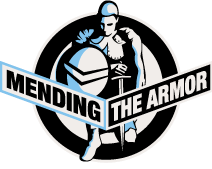Celebrating Success
The brave youth and young adults who choose to participate in our program truly are among the great and noble ones. It takes a tremendous amount of courage for these young men to admit to a pornography addiction and to ask for help. They are motivated by a testimony of the gospel and a strong desire to overcome their addiction. Most experience the ups and downs in their battle to achieve recovery and face strong adversity and temptation to give up and stop trying. In their efforts to conquer the addiction, they develop character and integrity and in time, develop the skills to achieve a recovery.
We recently celebrated the success of one of our youth achieving the one year mark for recovery. This was a great day as this young man had struggled with pornography addiction since he was eleven years-old. His reaching the year mark was an exciting milestone.
We also recently celebrated another one of our young adults receiving a mission call. This was a wonderful moment for him as he has worked so diligently to overcome his addiction. His becoming worthy to serve a mission and receiving a mission call was an inspiration and motivator to other group members who are striving to overcome the addiction.
These two successes are testaments to the Mending The Armor group pledge:
“In our battle, we form a brotherhood. Together, we strengthen and support each other as we work toward our goal of becoming men of integrity, worthy husbands and righteous fathers.”

